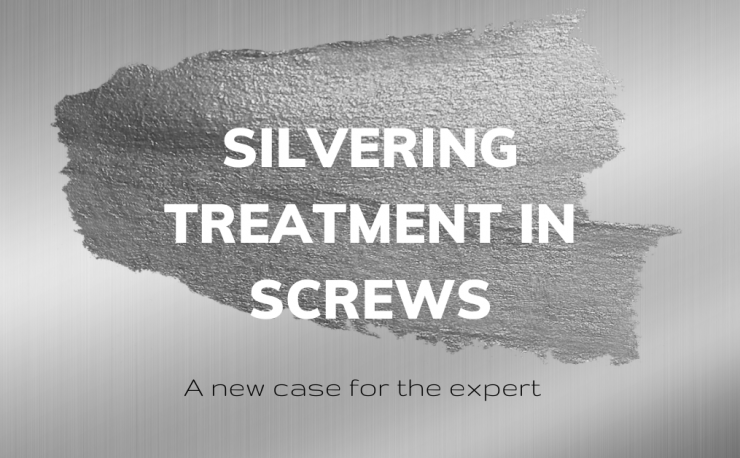
A few days ago our expert found himself faced with a curious problem concerning the breaking of some screws subjected to silvering.
Let’s find out together the details of the case.
The initial framework
Our reader had the need to execute a specifications, in which were prescribed stainless steel bolts A2-70, M6, with silvering treatment, placed on a flange (presumably always in stainless steel).
We do not know why these screws have been subjected to silvering. We only know that they will have to work at an operating temperature of about 400°.
The problem is that by tightening the screws with the torque shown in the specifications (20 Ma (Nm)), the screws snap.
Let’s evaluate all the data together.
If we look at the tightening torque of the M6 R70 stainless steel screws, the tightening torque to be applied varies from 6.3 Ma (Nm) to 12.2 Ma (Nm). This value depends on the friction coefficient.
This is why the screw breaks: the value indicated by the designer is much higher.
So, what prompted the designer to indicate that torque and choose that locking system (bolt M6-A2-70)?
And why were the screws subjected to the silvering treatment?
These two factors, are they connected?
Let’s make things clear.
Before making some hypotheses, let’s see more in-depth what we are talking about:
THIGHTENING TORQUE
Tightening torque means the force (or force system) that tends to generate a rotation around an axis.
In this case, it is the force with which the bolt is tightened (usually by means of a key).
Making the tightening of a screw, means generating a stretching of its tension rod.
Each screw is tested and designed to be tightened up to a certain torque value. This value is below its yield limit to prevent the material from modifying its internal structure permanently.
All controlled tightening screws are therefore loaded up to a maximum of 75% to 90% of their yield strength.
FRICTION AND ITS INFLUENCE
Another consideration is friction in threaded couplings.
The frictions to consider are of two types:
- friction between the bottom head of the screw and the surface
- friction between threads (screw-nut or screw-threaded hole)
The combination of these frictions disperses about 80% of the tightening torque applied.
From the above, it is easy to see how the coefficient of friction of the material and the surface finish are decisive in determining precisely the tightening torque to be applied.
Our hypotesis.
It is for these reasons that the designer has probably chosen to apply a silver coating: to raise the tightening torque applicable to the M6 bolt.
The choice of the resistance 70, together with the silvering treatment, was obviously not sufficient to arrive at the torque value required for this connection.
The same bolt with resistance 80, instead, possesses a torque at a value between 8,4 Ma (Nm) and 16,3 Ma (Nm). This value, multiplied by the factor given by the silvering (based on its coefficient of friction), could reach the torque 20 Ma (Nm) prescribed in the specifications.
Finally, we can also assume that the choice of silver as a solid lubricant was also due to the ability to maintain its lubricating function at high temperatures. That’s probably to disassemble the screws for maintenance or a possible replacement of the piece.
Visit our website and find out how easy it is for businesses to buy our stainless steel products online. Bolts, nautical accessories, fittings, fastening systems for photovoltaic systems and much more..
Do you want to read more articles? Click here.